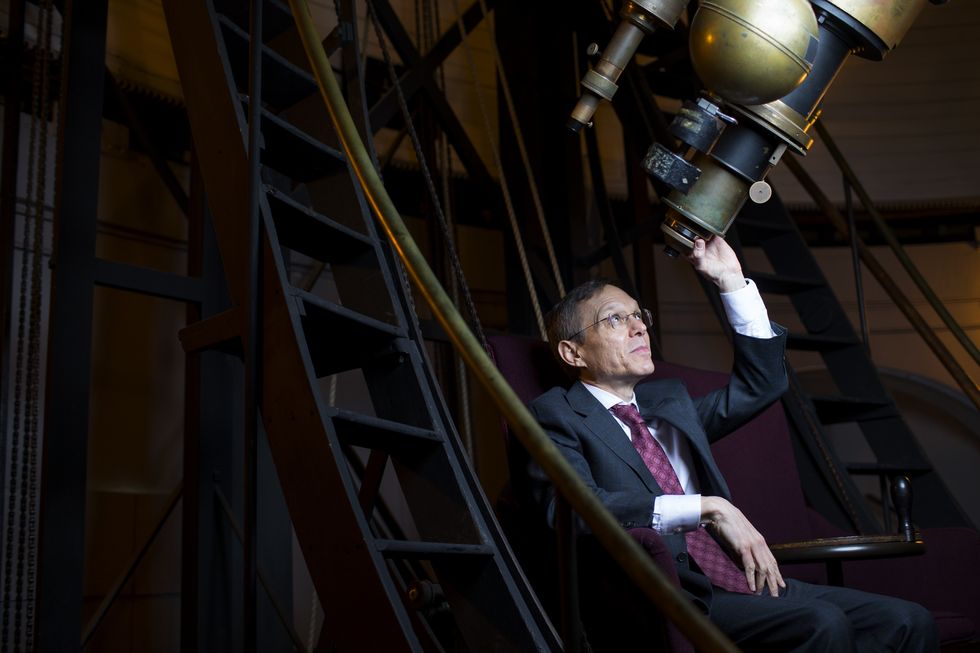‘Highly Maneuverable’ UFOs Defy All Physics, Says Government Study
- With the release of mounds of unclassified Unidentified Aerial Phenomena (UAP) documents, scientists are grappling with how to understand these the objects previously known as UFOs.
- A new paper from the Pentagon’s All-domain Anomaly Resolution Office (AARO) and Harvard University confirms that these UAPs seem to defy physics as they lack certain tell-tale signs, such as an ionized tail or optical fireball produced by friction.
- However, the paper posits that this is likely more a problem with the sensors recording this data than science’s current understanding of physics.
The research around Unidentified Aerial Phenomena (UAP), which are really just UFOs by another name, is often wrapped up in the feasibility of intelligent life visiting Earth. But in a new draft paper (that has yet to peer reviewed), Sean Kirkpatrick, director of the Pentagon’s All-domain Anomaly Resolution Office (AARO), and Harvard University’s Avi Loeb, stripped away the more philosophical questions about life on other planets and instead focused on the physics of “highly maneuverable” UAPs specifically.
While designing “physical constraints” in order to analyze these UFOs, Kirkpatrick and Loeb determined that the recent UAP observations do defy the laws of physics, stating that “the friction of UAP with the surrounding air or water is expected to generate a bright optical fireball, ionization shell and tail—implying radio signatures.” However, many of the UAPs studied show no signs of these signatures.
Despite what seems like a clear sign that something alien is going on, the paper stresses that such anomalies could be explained by more mundane means, i.e. that our human-instruments just aren’t sensitive enough to understand what’s going on. The authors write:
More From Popular Mechanics

“The lack of all these signatures could imply inaccurate distance measurements (and hence derived velocity) for single site sensors without a range gate capability. Typical UAP sightings are too far away to get a highly resolved image of the object and determination of the object’s motion is limited by the lack of range data.”
In other words, these UFOs could be nothing more than sensor-induced optical illusions. This is a noteworthy explanation as Loeb has been described as more of a UFO “believer” than his colleagues. Loeb created some controversy in 2017 when suggesting the cigar-shaped ‘Oumuamua (meaning “messenger from afar arriving first”), one of only two interstellar objects to ever enter the solar system, could be an artificially made object.
In 2021, Loeb also launched the Galileo Project at Harvard University, which wants to develop a rigorous scientific approach to studying UAPs. Despite being open to the possibilities of something extraterrestrial being the answer, Loeb remains skeptical of the current crop of blurry, out-of-focus data.
“A million blurry images are worthless, compared to a single high-resolution video that resolves an object as it maneuvers,” Loeb told Scientific American in February. So Loeb’s Galileo Project has actually designed a custom-built observatory that can analyze the sky in infrared, optical, and radio bands. Observatories like these would need to be placed throughout the U.S.—and eventually the world—in the hopes of gathering UAP data that’s more detailed that what the military has gathered in the past.
Reports like these will likely appear with more frequency as scientists across various agencies and universities begin developing ways to study these currently explainable objects. NASA has created a 16-member UAP study team to develop a roadmap for further study, and non-profit organizations have also formed to push more credible investigations into UAPs.
For now, it seems some scientists and institutions are interested in making the scientific conversation around UAPs a more credible one—but they’re going to need better data to work with.

Darren lives in Portland, has a cat, and writes/edits about sci-fi and how our world works. You can find his previous stuff at Gizmodo and Paste if you look hard enough.



